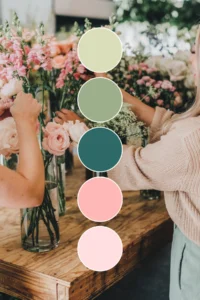Boost Your Site with Image Optimization: Let’s Make SEO Sparkle!

Who says optimizing your website has to be boring? Let’s add some pizzazz to your website by diving into image optimization for SEO — and don’t worry, it’s easier than you might think! Optimized images don’t just make your site look amazing; they can also work wonders for your load time, Google ranking, and the overall vibe of your site. Grab your favorite coffee (or tea), and let’s get those images working like they’re on the runway!
Why Should You Care About Image Optimization?
You’ve worked hard to create a gorgeous website, so you want it to be seen, right? But here’s the thing: oversized images or unoptimized files can seriously slow down your site’s loading time, and that’s a major turn-off for visitors. Google isn’t a fan either — it loves fast-loading sites! By optimizing your images for SEO, you ensure your website loads quickly, attracts more visitors, and ultimately ranks better in search results. So, let’s dive into why resizing and optimizing images is crucial for your site’s success.
Why Resize? Here’s the Scoop
Think of oversized images as anchors for your website’s speed — they’ll drag things down if they’re too large! When images aren’t resized properly, your site will take longer to load, which frustrates visitors. Here’s why it matters:
- Improves user experience: Users love fast sites! Did you know 40% of visitors will leave a site if it takes more than a few seconds to load?
- Boosts SEO: Google rewards fast-loading, user-friendly websites. Slow images can hurt your ranking, making it harder for potential customers to find you.
Resizing your images not only makes your site faster but also enhances user experience, helping you win Google’s favor and keep visitors happy.
Choose Your Image Format Like a Pro
All images aren’t created equal, especially when it comes to the web! Here’s a quick guide:
- JPEG: Ideal for photos, keeping quality high but file size manageable.
- PNG: Perfect for graphics with transparency but can be a bit heavy.
- WebP: The new kid on the block that combines quality with efficiency.
Choosing the right format is like picking the right outfit for the occasion — it makes everything work better!
Compress Without Losing That Crystal-Clear Quality
Think of compression as a quick diet for your images: they’ll look the same but take up way less space. The magic is in keeping the quality while shrinking the file size so your site loads like a breeze. Use tools like TinyPNG or ImageOptim to make it happen — just a few clicks, and you’ve got lighter images that don’t sacrifice any of that gorgeous detail. This will make your image optimization for SEO efforts really pay off!
Naming Your Image Files Like a Pro
Let’s talk about file names. It might seem minor, but naming your images properly can give your SEO a nice little boost! Instead of letting your images sit as “IMG452_Compressed,” try something specific and descriptive, like “Cute-Colorpalette-Pink-Swashes.” File names that describe what’s in the image help search engines better understand your content — plus, they make things easier to organize for you!
Alt Text: Your Image’s Secret Weapon for SEO
Alt text might sound boring, but it’s actually one of the easiest ways to boost your SEO. By adding a little description (hello, “fuzzy-golden-retriever-in-the-sun”!), you help Google understand what’s in your image, making your site more searchable. It’s like putting a little post-it note on your image, so search engines know exactly what it’s all about.
Ideal Image Sizes: Getting It Just Right
Wondering what dimensions to use for your images? Here’s a quick guide:
- Product and lifestyle images (square): For a high-quality display, 2048x2048px is a solid choice, though a minimum of 800x800px can work if space is tight.
- Hero images (large banner-style images): Aim for around 1600x500px to keep load times short and the look crisp.
- Decorative images (smaller, accent photos): Images that take up less than half of a page’s width generally don’t need to be massive — between 400px and 1000px wide should do the trick!
By keeping sizes consistent, especially for product images, you’ll create a more polished and cohesive look that’s also easier for your site to handle.
Free Tools to Make Your Images Pop
Why spend money when you can optimize for free? Here are some handy tools that make image optimization a breeze:
- TinyPNG: Compress those PNGs and JPEGs with zero hassle.
- ImageOptim: A fave for Mac users who want super-simple compression.
- Squoosh: This fun tool from Google lets you tweak compression settings to your heart’s content.
Your Website Is Ready to Shine!
With image optimization for SEO, you’re not just improving load speed; you’re setting your website up for success. Choose the right format, compress like a pro, add that all-important alt text, and you’re golden! These steps are quick, easy, and will make your site faster, more SEO-friendly, and just plain awesome.
So go ahead — optimize those images and watch your website sparkle!
FAQs: Image Optimization for SEO
What is image optimization for SEO?
Image optimization for SEO means formatting, sizing, and naming your images in a way that helps your website load faster and rank higher in search engines. It also includes using alt text, compressing images, and choosing the right file types for speed and clarity.
Does image size affect SEO?
Yes! Large images slow down your site, which can hurt your search engine rankings and your user experience. Optimizing images to the right dimensions and compressing them improves loading time—and that’s great for both SEO and Shopify performance.
What is the best image format for website SEO?
WebP is a modern format that offers excellent compression without quality loss. JPEGs are also great for photos, while PNGs are best for graphics with transparency. Using the right format can improve load speed, which helps your SEO.
How do I optimize images for Shopify?
Start by resizing and compressing images before uploading them. Use descriptive file names (like lavender-soap-product.jpg), and add alt text that includes keywords. Shopify automatically handles some aspects of optimization, but doing it manually gives you better results.
Can image optimization improve my Google ranking?
Absolutely. Search engines prioritize websites that load quickly and deliver a great user experience. Optimizing your images can reduce bounce rate, improve speed, and give your site a better shot at ranking on page one.
More Posts You Might Like…
More Posts You Might Like…
- Best Holiday Canva Fonts: Spooky Halloween to Christmas Cursive Fonts
- Pink and Green Color Palettes: 10 Preppy Combinations You’ll Love
- How to Sell Art Online: The Best Artist Shopify Themes for Creatives
- 24 of the Best Script Fonts (That Are Totally Free + Actually Cute)
Updated on April 22, 2025




